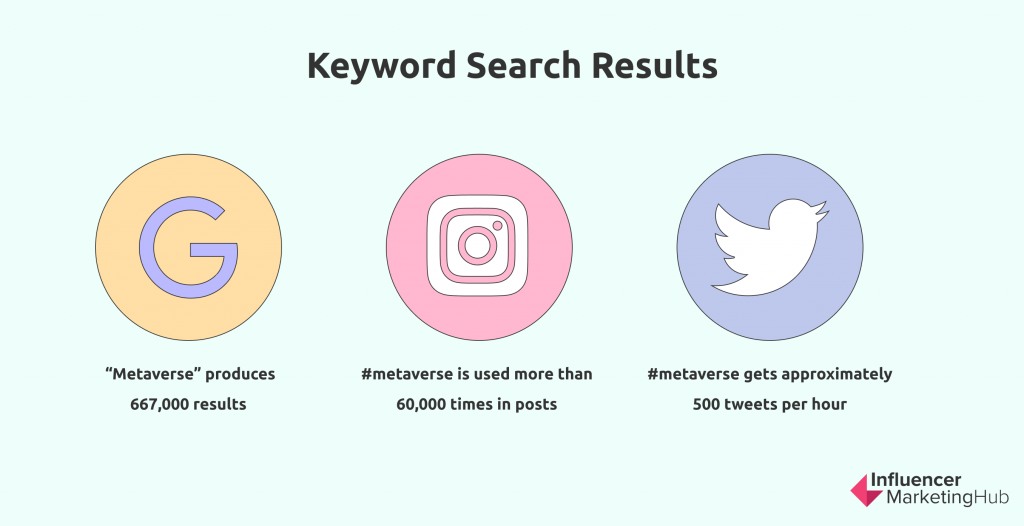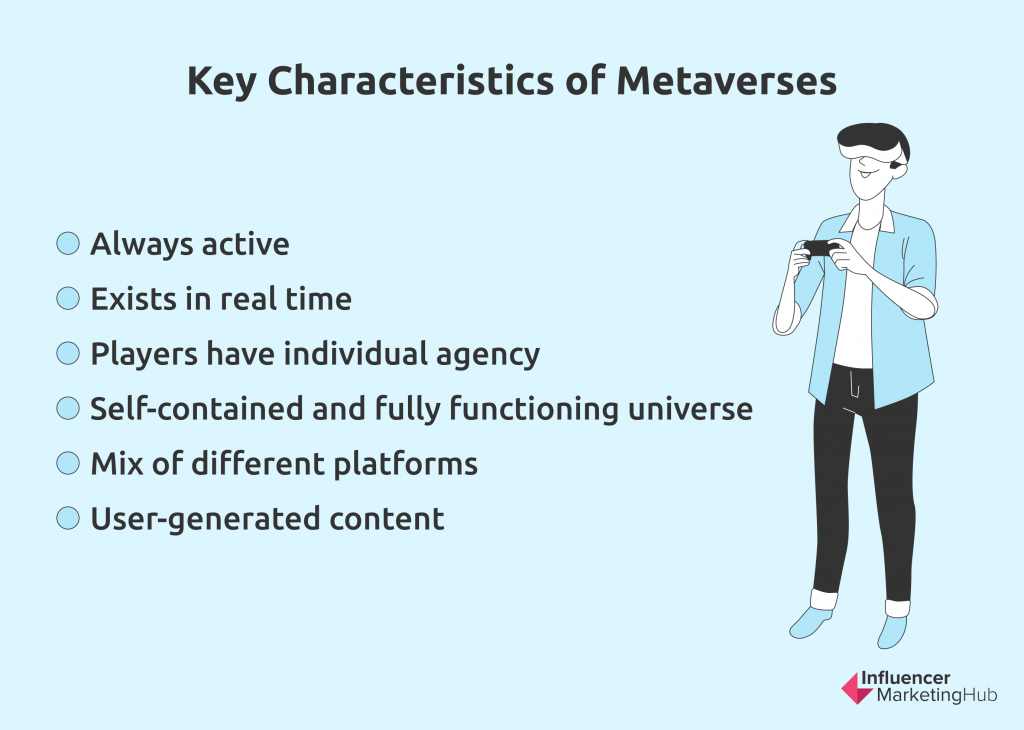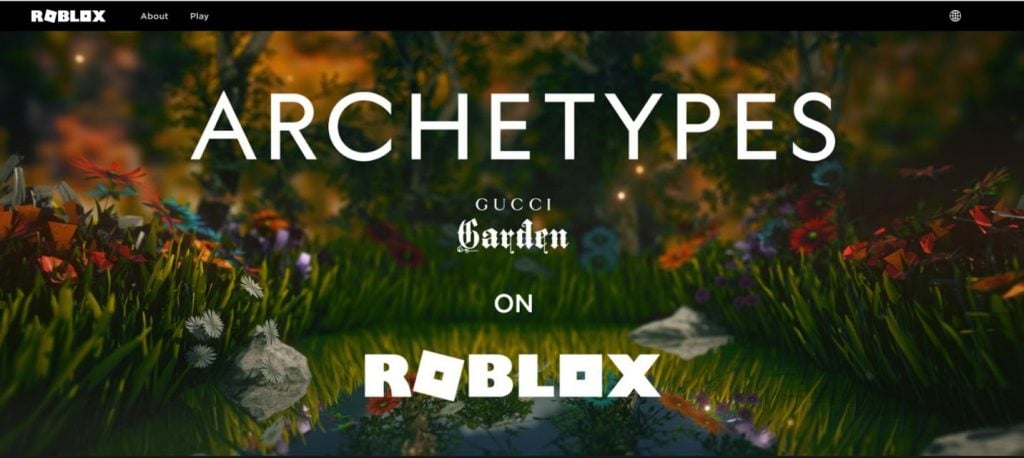Technology has been rapidly growing and shifting. We’re seeing innovations that were previously unimaginable. One of these innovations for many people includes the metaverse—a unique, immersive virtual environment that is quickly taking over the internet. You may have seen it first in science fiction movies like Ready Player One or The Matrix series, but now it is more than fiction.
With the continuous rise of virtual reality (VR) and augmented reality (AR), metaverses are penetrating the internet. It is estimated that approximately 85 million users will experience AR or VR at least one a month in 2021. While the Metaverse isn’t exactly what sci-fi has depicted it to be, it still continues to produce unimaginable value as a new computing platform.

Source: emarketer.com
For one, top-tier media seems to be all in. Forbes even started a column with Cathy Hackl, a renowned tech futurist and metaverse strategist. More than that, there’s an existing fund called the metaverse Investment Fund Metaverse ATF (NYSE: META). All these point to the rising significance of metaverses right now.
And consumers seem to be catching on. The keywords “metaverse” yields 677,000 results on Google. Meanwhile, the hashtag #metaverse is widely used on Instagram, with more than 60,000 posts on the social media platform and is tweeted more than 500 times per hour on Twitter.
Now, what are its implications when it comes to social media, PR, and digital marketing? Here, we take a deep dive into this virtual universe.
A Deep Dive into Metaverse Marketing:
Understanding the Metaverse
Today, the metaverse involves a shared virtual space where users are represented by virtual avatars. These virtual worlds continue to evolve and grow based on user decisions and interactions within the space. To that effect, it mirrors the real world in that it has no “end.” It’s just a universe that continues to expand as more and more users jump in.
It’s not just a simple virtual theme park where the design is centrally planned out; nor is it just a simple game exclusively for the enjoyment of children. It’s also not a simple application you can download off the app store and “play” at your convenience. Metaverses are virtual universes that merge reality and the virtual world.
If you find that a little difficult to wrap your head around, Matthew Ball has outlined the key characteristics of metaverses.
- Always active. Metaverses do not pause when you leave them, nor do they end. They just continue on indefinitely.
- Exists in real time. The metaverse has a timeline that synchronizes with the real-world timing.
- Players have individual agency. Players can be doing separate activities at the same time. One could just be standing still in the corner while others are interacting with each other.
- Self-contained and fully functioning universe. The metaverse is a fully functioning universe that allows users to create, own, sell, and invest. Users can also be recognized and rewarded for the labor they put out in the metaverse.
- Mix of different platforms. Different platforms can work together in the metaverse. For example, in the case of video games, you should be able to bring items from one game to another game.
- User-generated content. Metaverses are more than just virtual spaces for users to hang out in. Users can create content that other users can also enjoy.
Marketing in the Metaverse
Digital marketers need to be kept up to speed with the latest technological developments. This includes understanding the metaverse and its full potential. What marketers need to understand is that metaverse is not just a trendy new thing; it seems like it is here to stay and is making its way to be the next big thing.
How can marketers adapt as this metaverse expands?
First, marketers need to keep in mind the value of millennials and Gen Zers as a target market. These generations are also avid users of some forms of metaverses, such as games like Roblox and technologies like VR. With that in mind, let’s explore how marketing can be done in the metaverse.
Parallel metaverse marketing within real-life marketing
Create marketing experiences that tie in with real-world experiences or parallel what your brand already does in real life. For example, the AB InBev’s beer brand Stella Artois worked with Zed Run in June to create a Tamagotchi-like experience crossed with the Kentucky Derby. They did this because AB InBev’s Stella Artois is big on sponsoring sporting events, in particular horse races. Hence, creating an online platform where non-fungible token (NFT) horses are traded, raced, and bred seems like a natural entry point for them.
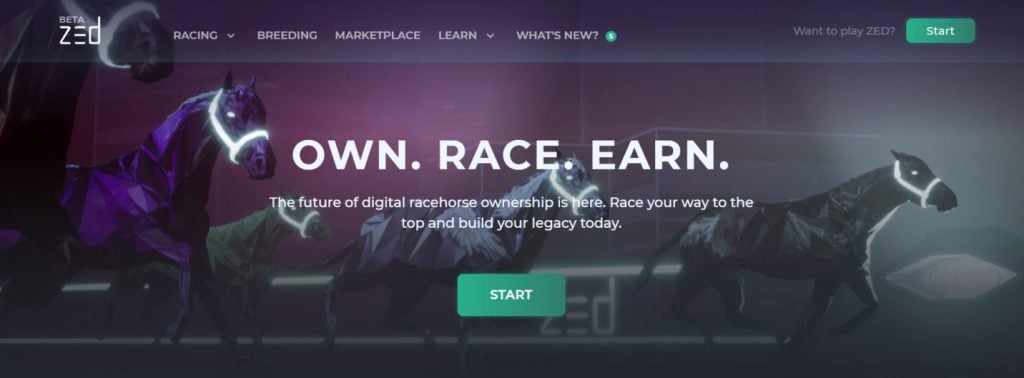
Source: zed.run
Immersive experience is key
You can offer virtual advertising in the metaverse. For example, Bidstack, a video game ad tech company, transitioned from working off in real-world outdoor advertising to placing ads on virtual billboards.
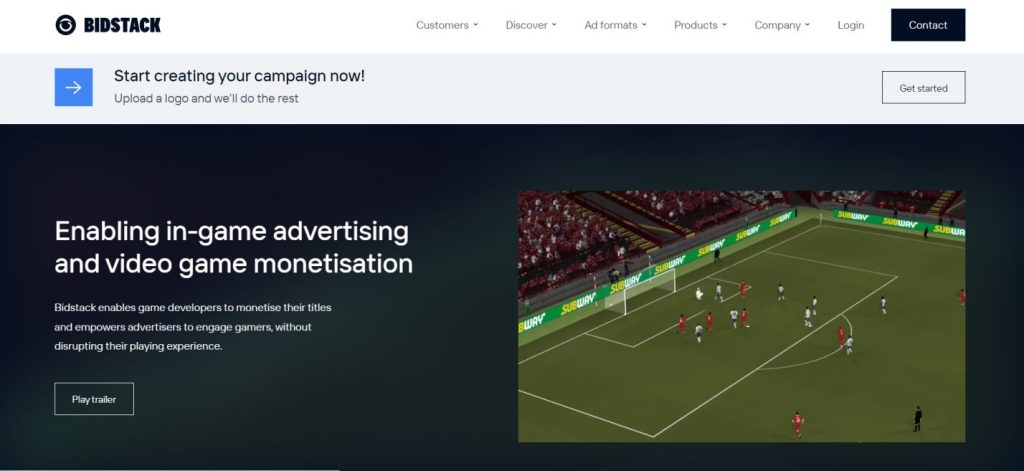
Source: bidstack.com
However, you can go beyond virtual billboards. Since metaverses are experiential and immersive in nature, it’s best to take advantage of this by offering the same immersive experience with your ads and marketing initiatives. Offer branded installations and events that users can interact with, as opposed to just placing simple ads.
We have seen early movers offer immersive experiences to their users such as a Lil Nas X concert in Roblox, the Gucci Garden experience visits, and the virtual rendition of the Washington Heights neighborhood as part of Warner Bros.’ promotion of In the Heights. Brands have recently discovered new revenue streams through collaborations with the Roblox metaverse and other metaverses.
Make collectibles available
People like collecting things, and the metaverse is yet another space for them to showcase their interests. You can make the same experience available in the metaverse by offering assets or limited-edition items that they can only collect in the metaverse.
For example, the Gucci Garden experience on Roblox offers The Collector’s Room. It allows people to collect limited Gucci items in the metaverse. Gucci, from their initial sales of the collectible items, collected 286,000,000 Robux from the game.
Engage with existing communities
Generally, people are opposed to advertising. So as brands try to penetrate the metaverse, it’s important to not show up and annoy people who are already there. More than that, you’ll need these users’ positive reception since you will be trying to market to them.
Remember that you can’t just enter a new platform without taking the new format into account. In Roblox, for example, brands gain more traction when they partner with members of the Roblox developer community in creating items and experiences. Similarly, when O2 threw a concert on Fortnite, they partnered with creators who were already experts on the Fortnite platform.
Think of this as influencer campaigns. User-generated content is important, and so community members become integral parts of the execution of your campaigns.
Continuously experiment
It’s an exciting time for marketers. While there are guiding principles that could inform what kind of strategies and tactics marketers can make, the metaverse remains to be a generally new platform that offers plenty of room for experimentation. Best practices have yet to be properly established, and paradigms have yet to be fully and comprehensively created. This gives marketers plenty of room to try to be unique and experimental in their approaches.
Other Unique Metaverse Examples
- Dimension Studio made $6.5 million in revenues as a result of their experimentation with metaverses for fashion brands. They established a virtual production set-up that allows a user to step onto a platform, be scanned by 106 cameras, and dropped into virtual worlds to test out garments and other items. They are most known for their work on Balenciaga’s Afterworld game for Autumn/Winter 2021.
- Grand Theft Auto V, an open-world sandbox game, released clothing options that were similar to what the protesters in Hong Kong wore. Hong Kong protesters were able to take their battle in the real world into the metaverse, joining many artists who have been repurposing virtual worlds for political expression.
- Home decor company Houzz allows consumers to create digital photo collections of their furniture and home items. Houzz earns each time someone purchases items through their service. In 2017, they added a 3D viewer that lets users view items in 3D directly through a camera and visually incorporates them into the user’s physical space.
- Google Maps demoed an AR feature of their walking directions feature. This feature offers exact visual instructions and arrows that would make it easier for users to find their way to their destinations. The user simply needs to point their camera towards the direction with which they need instructions, and the AR feature will point them in the correct direction.
The Future Is in Metaverses
Now, many companies are investing in metaverses. They are betting on it, not just for entertainment purposes, but for business and professional purposes as well.
For example, the biggest social media platform, Facebook, is seeing itself as a metaverse company in the future. Mark Zuckerberg is focused on building social metaverses and investing in Oculus, Facebook’s AR and VR technologies. In August 2021, Zuckerberg introduced a work metaverse for Oculus that allows people to work together, sit in a conference room, and interact as if in an office. This is perfect timing as more and more offices have been switching to work-from-home arrangements.
More than Facebook, Silicon Valley, in general, has been busy betting on metaverses as the internet’s next generation. There are also plenty of metaverse games currently incorporating metaverse-like elements on their platforms. For example, Fortnite and Animal Crossing allow concerts in their game.
On top of that, HTC is working its way towards business-based—instead of consumer-based—VR technology. This is a sign that VR technology is slowly becoming more than just for entertainment.
If everything mentioned above hasn’t convinced you yet, then perhaps this will: people are buying real estate in the metaverse, particularly on Earth 2. Now that’s a strong indication that the tech is here to stay.
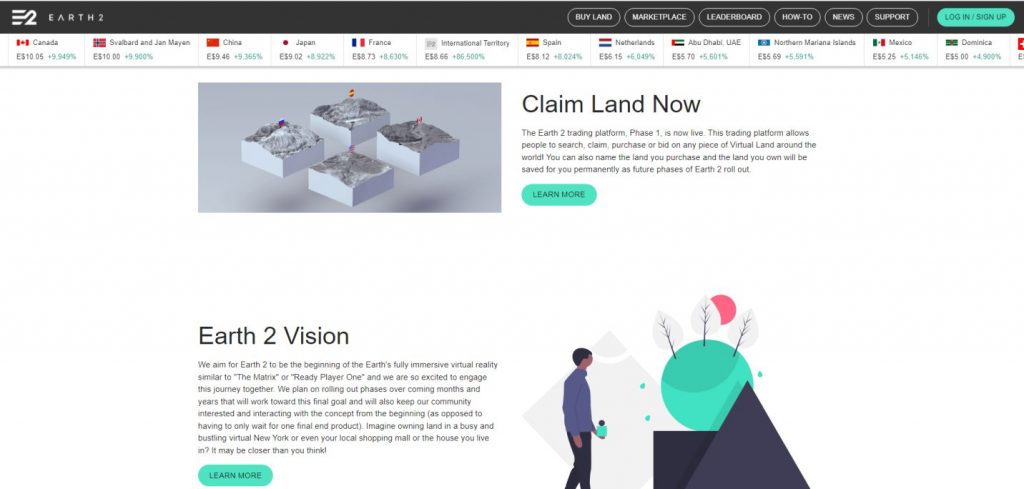
Source: earth2.io
Challenges in the Metaverse
The metaverse promises an exciting future for brands, but there are still some challenges to overcome along the way.
For one, while metaverses are gaining popularity, they can still use some more traction. Because of the technological requirements of metaverses, accessibility is an issue for it. Not everyone has access to the devices necessary to enjoy the metaverse, such as higher-end computers and VR lenses. This greatly limits the potential market for brands and hinders efforts for mass marketing.
Brands also need to be careful in navigating metaverses. Seamless integration is crucial to avoid alienating players from the brand. Because the technology is new, brands might still be having trouble finding their proper place in the metaverse and may come off as overly blunt in their messaging. Plan your placements well and make sure that it feels natural and well-integrated in the metaverse.
There are also still a lot of misunderstandings surrounding metaverses. People often think of them as a simple game for children. Not everyone understands the value of metaverses, so brands may risk not being taken seriously for their efforts in establishing a presence within these platforms.
Data privacy and security remain to be a challenge in the metaverse. With new technology comes the need for more evolved security measures. This requires building new methods of data privacy and protection where there was none. For instance, personal verification might require more data from users, thereby increasing data privacy risks.
Lastly, because metaverses are free for all, brands need to be careful in protecting their image. The more control users have in a metaverse, the higher the likelihood that your brand might appear next to questionable content. There’s also the risk of getting your placements vandalized or disrespected by users. This is why it’s important to be seamless, mindful, and precise with your marketing strategies so that users can feel good about sharing the virtual space with you and engaging with you there.
Ultimately, metaverses offer a promising future for computing and the internet. Even more so, they offer plenty of room for innovations for marketers and advertisers alike. Despite these challenges, the opportunity to be experimental, provide an immersive experience, and be innovative triumphs.
Frequently Asked Questions
What means metaverse?
The metaverse refers to a highly immersive, virtual world where people can gather together to play, work, and socialize.
Is Animal Crossing a metaverse?
The term metaverse has become trending in recent years. Facebook announced it would change its company name to Meta to reflect their broader goals in the AI space. The metaverse can also be applied to other properties as well, like Fortnite, Roblox, and even Animal Crossing.
What is FB metaverse?
Facebook didn’t create the metaverse. Metaverse is a new idea for the internet where people gather together in a virtual space to socialize, play, and work.
What is Facebook Metaverse?
Facebook’s Mark Zuckerberg has not revealed much about the company’s plan to build a “metaverse,” or a digital world. However, we do know that Facebook’s metaverse will consist of virtual reality headsets and augmented reality.

